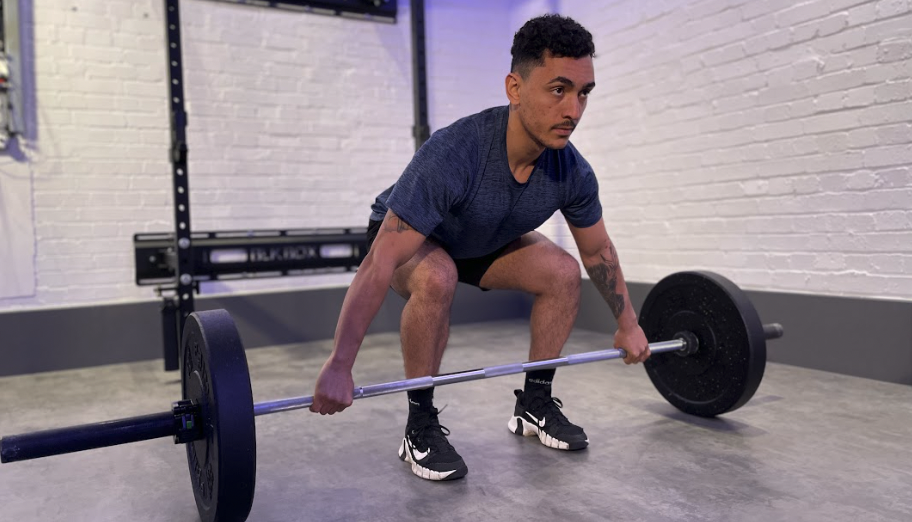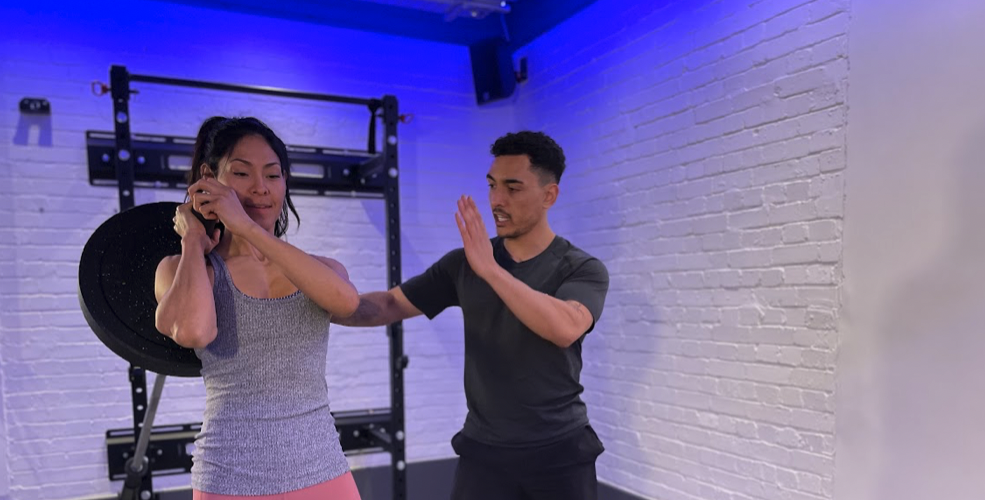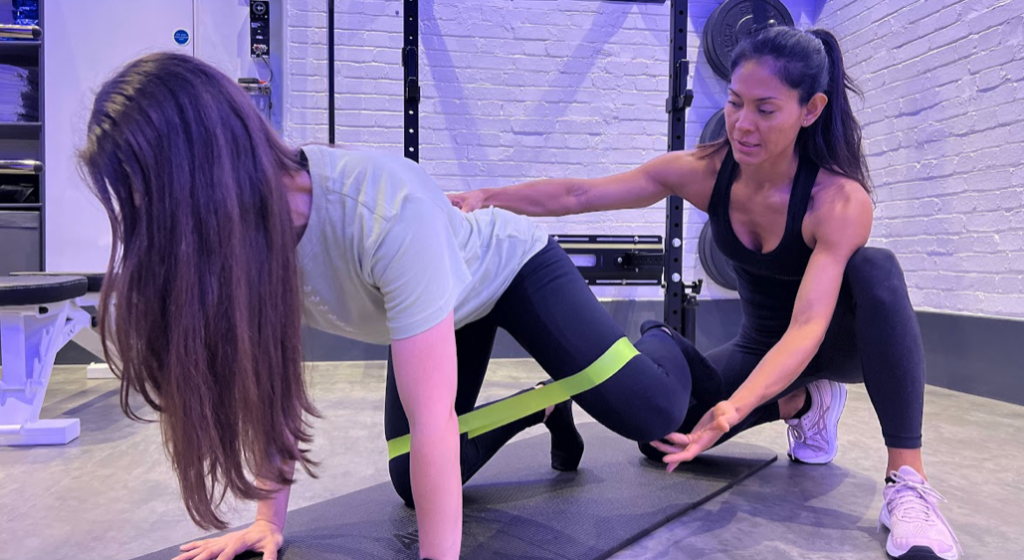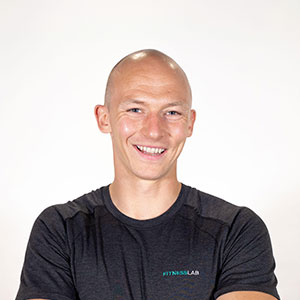There’s an idea that gyms are for people who either want to get muscular or get slim – with your goals deciding whether you spend your time in the ‘cardio’ or ‘weights’ section.
Quite simply, this just isn’t the case.
Strength training isn’t something that’s reserved for people who want a bulky muscular look. Quite the opposite in fact. At Fitness Lab, strength training is the key component we’ll talk to you about if you’re keen on ‘slimming down’ or ‘toning up’.
Here, we’ll explain in more detail about why lifting weights is an essential part of any weight loss journey. We’ll also dispel a few myths about strength training along the way…
Does lifting weight to lose weight work?
The simple answer here is yes. Lifting weights can help to increase lean muscle mass. Lean muscle mass burns 5.5 times as many calories as fat, resulting in a higher resting metabolic rate.
This means the number of calories your body requires to complete the day to day tasks to keep you alive increases. So you burn more calories when doing absolutely nothing. Win-win all round.
“Won’t I get bulky?”
A lot of people worry about the number on the scale increasing as they gain muscle mass and also the thought of potentially looking “bulky” also putting some people off from lifting anything heavier than 2kg. The myth here is that muscle weighs more than fat. This is not the case. 5kg of muscle is the same as 5kg of fat….. It’s their densities that are different.

Muscle is denser than fat so 5kg of muscle will take up a lot less room than 5kg of fat. Two things that weigh the same can be very different in size. So lifting weights for your fat loss goals is key, as the number on the scale may stay the same (or even go up) but your body fat percentage would have reduced and you will look leaner and be in a healthier condition with a reduced risk of developing conditions such as diabetes or heart disease.
“What about cardio?”
Cardio is always likely to be favoured over lifting weights as it is extremely accessible. Little to no equipment required and most people require little to no coaching on how to walk and run or use cardio equipment. However cardio doesn’t build muscle mass but it can help you expend calories and also keeps your cardiovascular system healthy.
An exercise programme that includes lifting weights and cardio will always be the most ideal training programme.
How does weightlifting burn fat?
Muscle is metabolically active and burns calories, so by increasing muscle mass by lifting, we increase our energy expenditure and resting metabolic rates.
Resting metabolic rate is the total number of calories burned when your body is completely at rest. RMR supports the everyday tasks your body needs to do to stay alive such as breathing, circulating blood, organ functions, and basic neurological functions. RMR is proportional to lean body mass and decreases approximately 0.01 kcal/min for each 1% increase in body fatness (NASM reference). So the higher your body fat percentage the lower your Metabolic Rate.

There are a few non controllables when it comes to our RMR, such as age and genetics. According to the National Academy of Sports Medicine, age-related reductions in our resting metabolic rate (RMR) can decrease by approximately 2% per decade after peak growth is attained (late teens for females, early 20’s for men). Considering how RMR contributes around 60-to-75% of total daily energy expenditure (TDEE), in practical terms this equals approximately 25-to-30 calories per day for the average adult or 2½-to-3 pounds (1.1-1.4 Kg) per year.
So by lifting weights and building lean muscle mass we increase our metabolic rate. Peak muscle mass in humans usually occurs at ages 28-to-32 after which muscle losses begin to occur. The ability to preserve muscle mass or even better, build muscle mass can help preserve our age-related losses. Even a small gain of 2-to-4 pounds of muscle mass can provide a 7-to-8% boost in metabolism, which can add approximately 90-to-110 kcal to TDEE per day (NASM Reference)
How much weight should I lift to burn fat?
Low reps and higher weight – or – high reps and lower weight….that is the question.
In general lower reps and higher weights tend to build more muscle mass, whereas higher reps and lower weight tends to increase muscular endurance.
However this doesn’t mean you just have to stick to one method. A combination of the two can be extremely beneficial for long term success in increasing muscle mass. Constantly working with heavier weights and increasing them regularly can exhaust the body and the neurological systems needs time to recover and adjust.

So, mixing in some lower weights using higher reps gives the body a chance to recover whilst also increasing muscular endurance. Lifting heavy weights for low reps for a prolonged period of time can eventually cause you to reach a plateau. In order to continue to progressively overload your technique may break down or in turn you may injure yourself.
Changing up your programme between the two methods can mean you can continue to make progress over a longer period of time without plateauing.
It isn’t however just lifting weights that helps to build muscle mass, it’s a combination of diet, genetics, metabolic rate, hormone levels, body type and individual muscle fibre composition. There are many, many factors but lifting weights is a sure fire way of increasing your muscle mass and in turn reducing your body fat percentage.
What does a typical weight lifting to lose fat workout look like?
Depending on how many weight lifting sessions a week you are doing will depend on what your workouts look like.
If you do 2-3 sessions a week they are likely to be full body sessions where you target the 4 main movement patterns in each session. Upper Body Pull, Upper Body Push, Lower Body Pull and Lower Body Push.

This will be to ensure you are working each part of the body enough times in the week to overload and improve. However if you are training 4x a week these are likely to be split into 2x upper body sessions and 2x lower body sessions. This is to ensure you get the right amount of recovery between sessions for each muscle group/ movement pattern. Recovery is essential to muscle growth. Without it you will just continue to fatigue your body without giving it the chance to adapt and change.
Technique matters!
If you are new to lifting weights then you will need to build up your movement competency by learning correct movement patterning, either with just your body weight or potentially some resistance bands for slight resistance.

Using cable machines are also a really good way of learning new exercises and perfecting your form whilst using a resistance. From here you will then progress up to working with dumbbells and/or kettlebells for some exercises.
Free weights require more strength and control as all the different parts of the body are required to work at the same time but potentially doing different roles. For example your core may need to be controlled and engaged but your arms and or legs may be more dynamic in multiple planes of movement. As you get stronger you will gradually be able to lift heavier and heavier weights which may mean progressing up to using a barbell for some exercises. Barbells usually start at around 15-20kg with no weights on either side, hence why building up to this weight using kettlebells or dumbbells to master the correct technique is essential.
Working with a good personal trainer will mean you get a programme that works for YOU
Everyone progresses in weight lifting at different speeds and everyone’s programmes can look completely different. That’s why it is great to get advice from a personal trainer who can point you in the right direction with your training depending on your lifestyle, day to day routine and goals. Every training should be individual.
What works for someone else may not and is unlikely to work for you. We all have different bodies, goals as well as life admin and responsibilities but there are definitely options that can fit around all of it.
If you’d like to talk to the Fitness Lab team about how we would use weights to help you obtain the body you daydream about – get in touch! You’ll get a friendly, informal opportunity to chat with us about how personal training could fit into your life.

